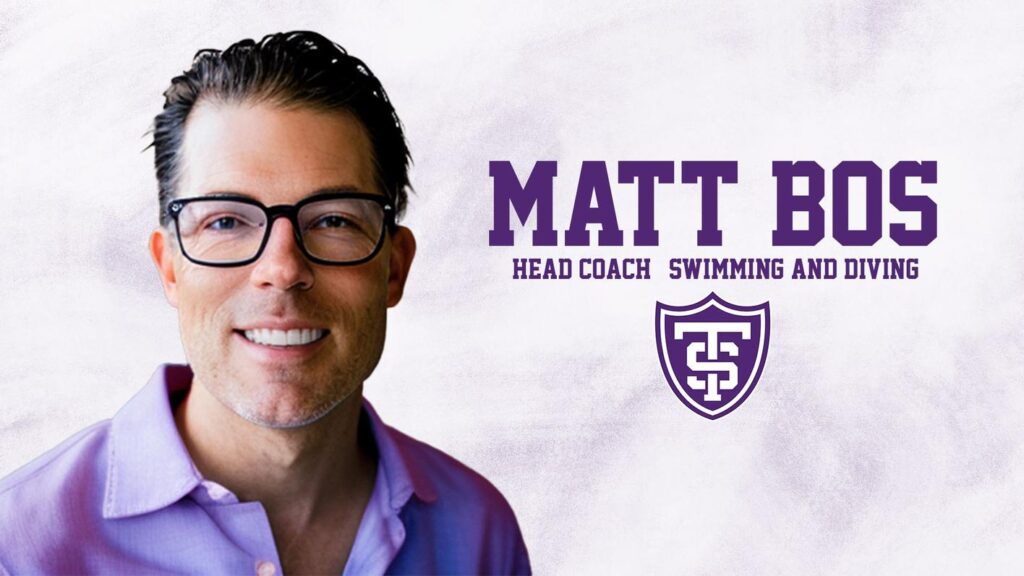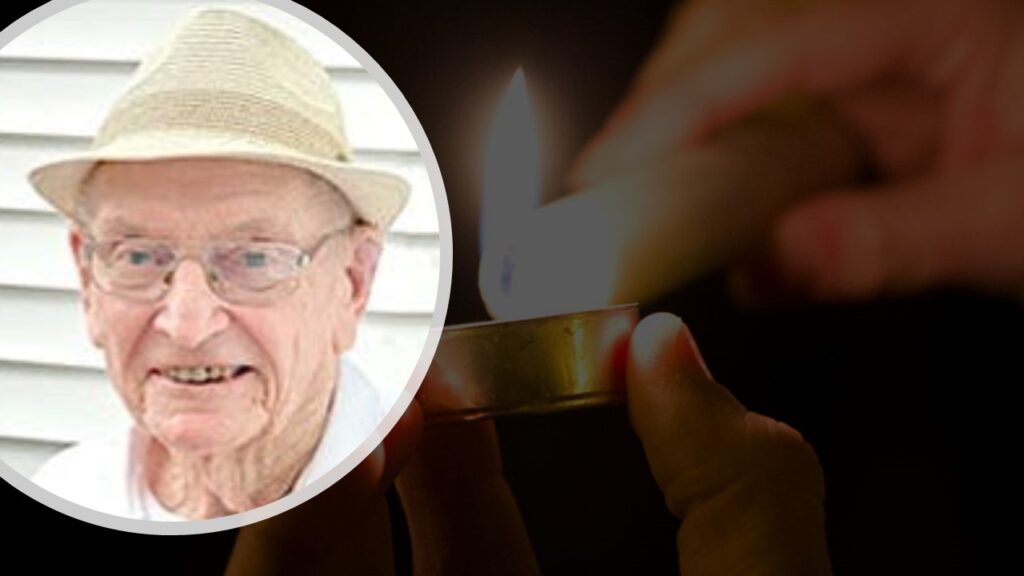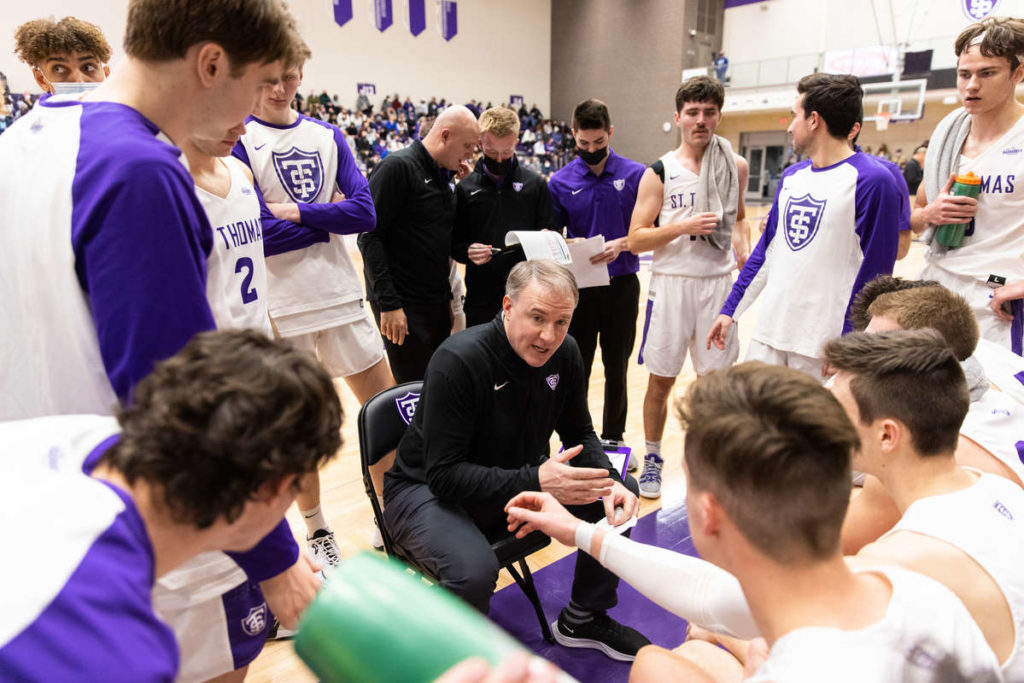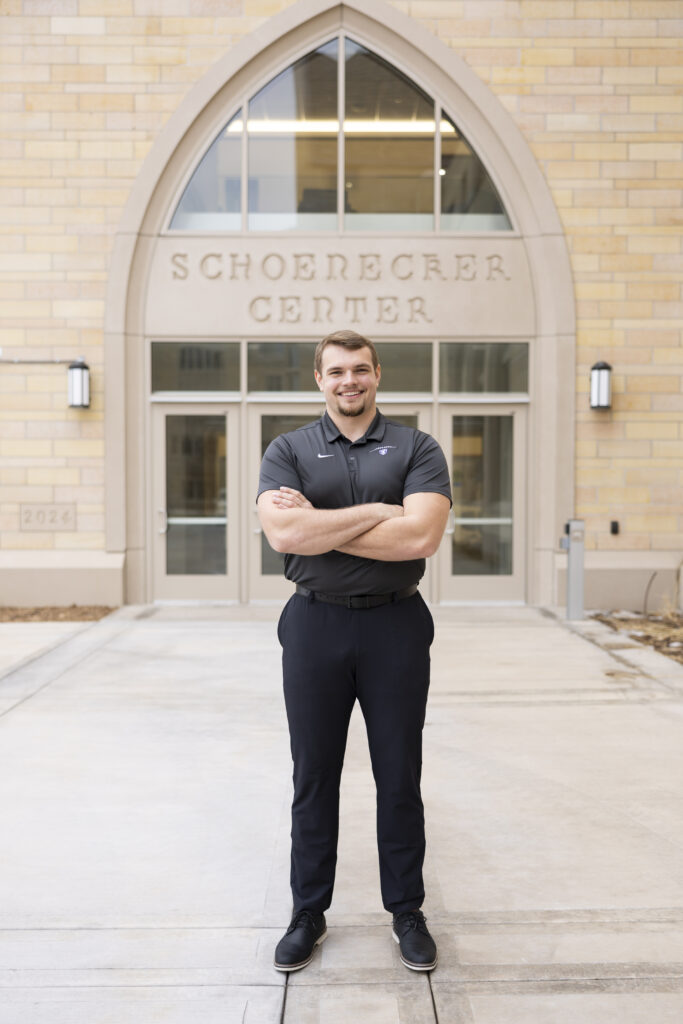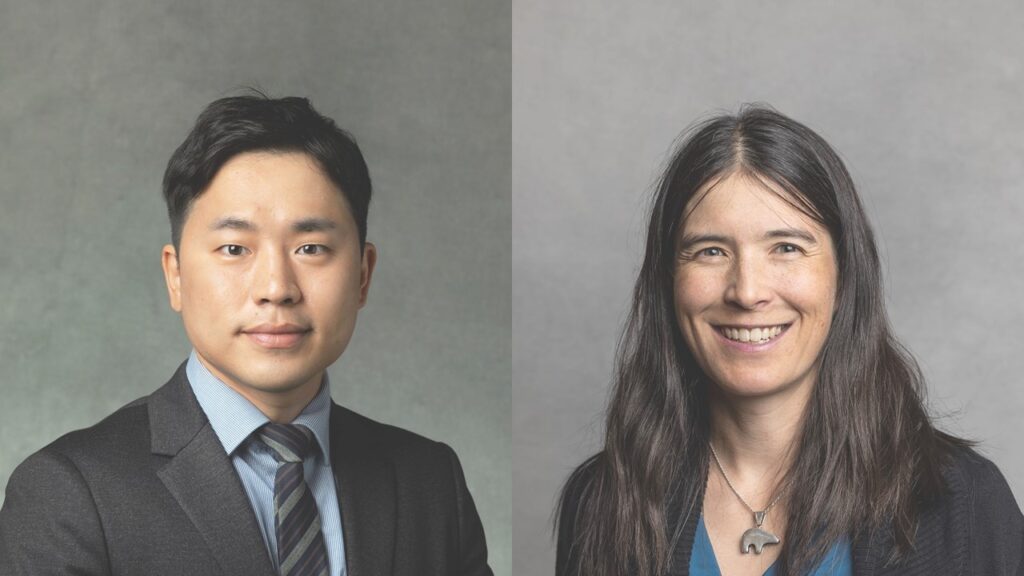After decades of relying on their trusty tape measure … it was time for an upgrade.
The age-old system for measuring horizontal jumps – two people running out into a sand pit with a tape measure – was slow and inefficient. To speed things up, the team had an eye on something with a little more technological star power: lasers.
But an online search proved disappointing. Commercially available solutions are quite expensive and would not fully meet the team’s space and mobility requirements.
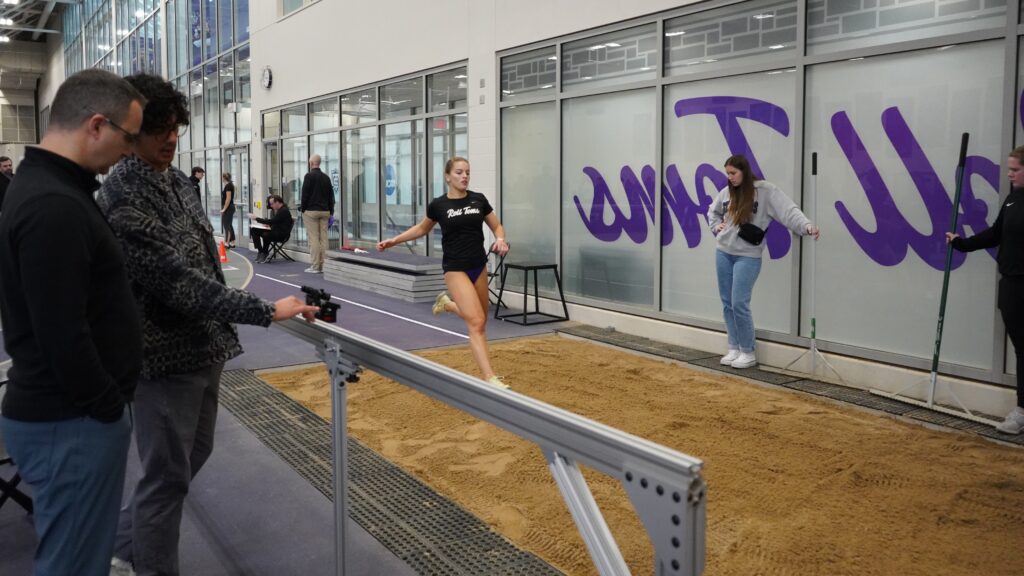
Assistant track and field coach Preston Huddleston presented the dilemma to students in the School of Engineering’s Senior Design Clinic. A former student-athlete on the track and field team, Huddleston ’18 graduated with a degree in mechanical engineering and participated in the clinic himself. He knew it was the right place to turn.
“These students bring a lot of fresh ideas and perspectives that you simply cannot think of yourself,” Huddleston said. “I’ve got one brain, they’ve got four.”
In their senior year, engineering teams take part in the clinic, using their knowledge from engineering and liberal arts courses to solve real-world problems. Teams work with industry sponsors, nonprofits and, in this case, St. Thomas Athletics.
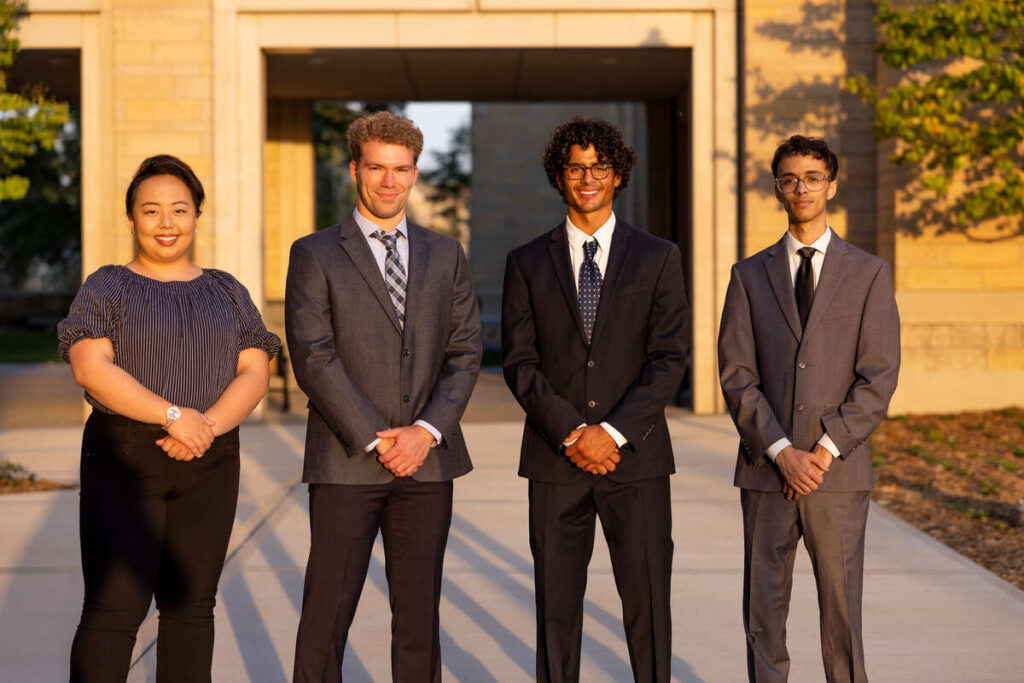
In June 2023, seniors Ismaiil Nur ’23, Jack Weber ’23, Ezra Wells ’23 and Gaofeng Xiong ’23 received their challenge. Under faculty adviser Dr. Chris Haas, the team would work for the next seven months to design, test and build a customized laser measuring system for their client.
Students based their design on an existing commercial system but made improvements and incorporated a long list of customization requests. It needed to be mobile, weatherproof and disassemble into smaller pieces for storage.
“We were really focused on the customer requirements,” Xiong said. “We spent a lot of time focused on how those requirements should impact our design, and how to turn those needs into a physical product.”
The entire capstone experience is meant to mimic working on an engineering team in the real world. Students tackle the full design cycle, from concept to completion using prototypes and models.
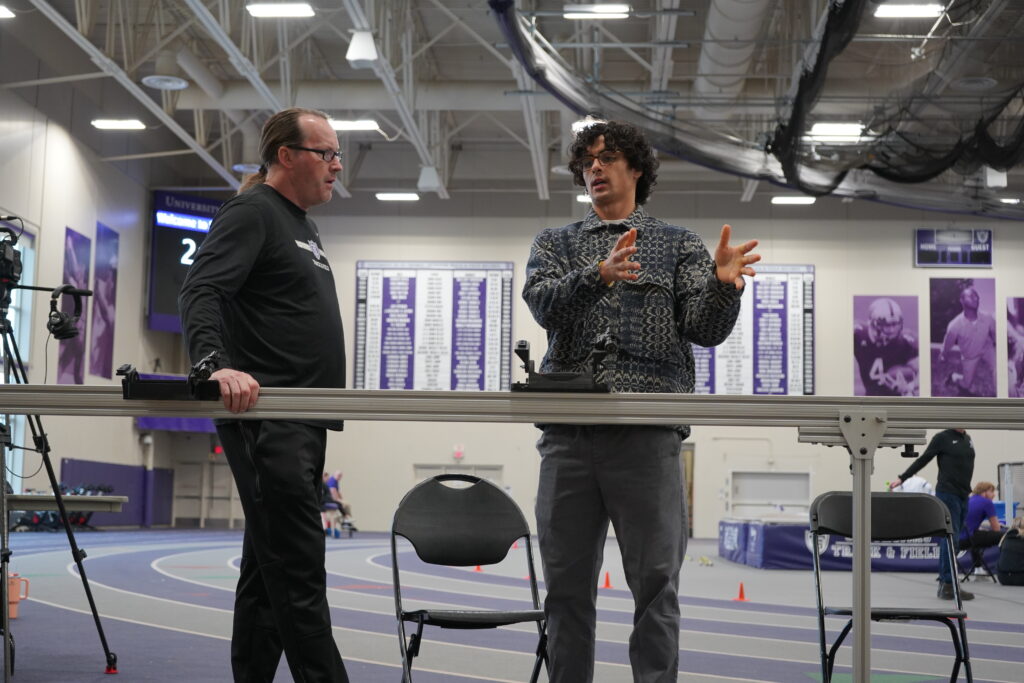
“You learn how to engineer like an actual engineer,” Huddleston said. “You’re spending a lot of time thinking critically and designing something for the real world.”
For this project, students had to follow guidelines from USA Track & Field. And, working with lasers, they also had to make sure their system was safe.
“We tried a lot of ideas that just didn’t really work out,” Wells said. “But we came together as an engineering team, figuring out what aspects and ideas we could improve on, and get the very best by working through it.”
The team eventually settled on a system featuring two laser carriages that can be moved at different angles along a rail beam. The new system allows users to measure long and triple jumps in just seconds, dramatically improving efficiency by speeding up the process. In a meet with dozens, sometimes hundreds of jumpers, every second counts.
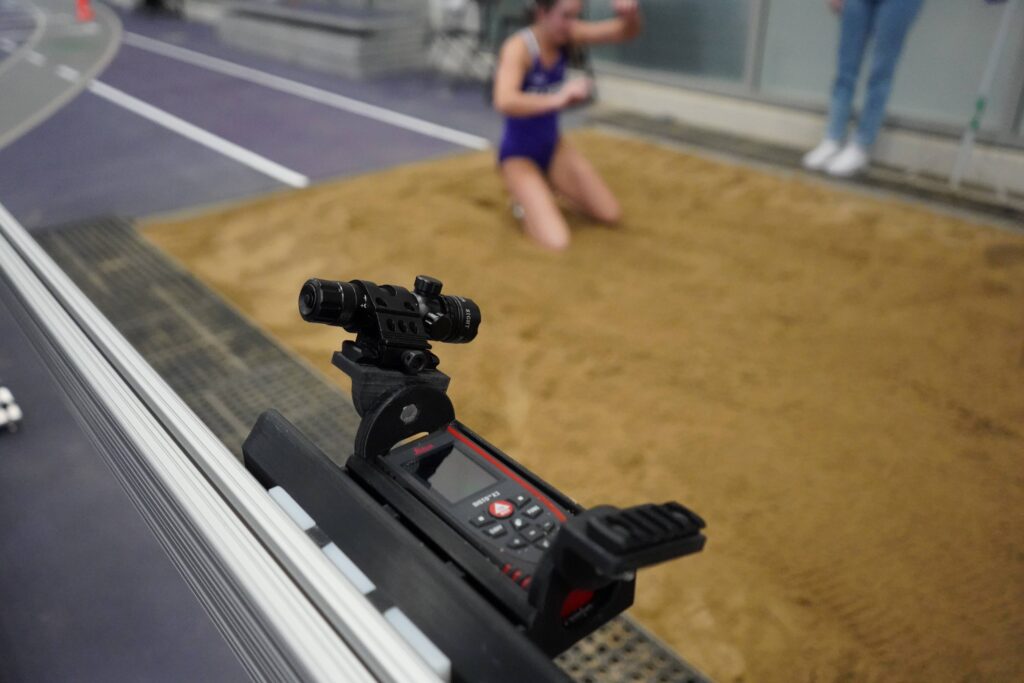
Officially rolled out at the St. Thomas track and field indoor meet on Jan. 12, the new system got its final, and most important, test. Through three hours of horizontal jumps, the lasers did not disappoint. And no one seemed to miss using the old tape measure.
“This was such a cool project because we got to see it all the way through to the finish line,” Wells said. “We got a chance to watch the final product and see that the customer was really happy.”
Similar commercial laser measuring systems retail for $4,000. The engineering team spent just $1,701, saving the track and field team thousands of dollars all while delivering a customized product. Their design may even be sold in the future.
Coach Huddleston couldn’t have been happier with the results.
“Honestly, the result was phenomenal,” Huddleston said. “This is a fantastic example of interdepartmental collaboration, as wells as a great showcase of the engineering program's ability to train creative, capable and pragmatic engineers.”
